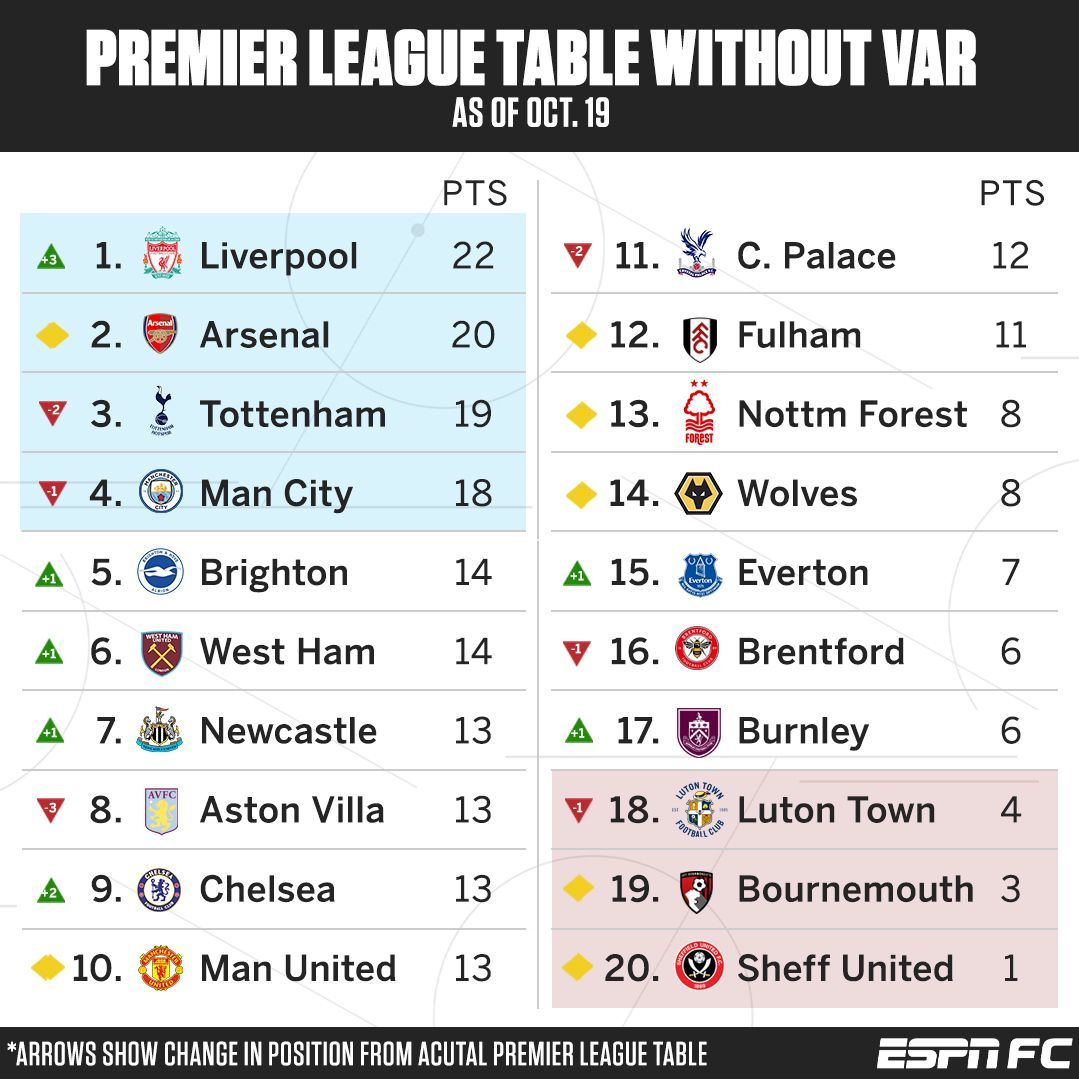We’re already almost a quarter of the way through the 2023-24 Premier League season and, unsurprisingly, VAR controversies have not gone away. But which clubs have been the winners and losers from the influence of the video referee?
ESPN brings you the VAR Effect Table. So far there has been 16 VAR overturns in games, and we’ve calculated how they might have impacted results.
At this stage of last season we’d seen 25 decisions changed — which means interventions are down 36% year-on-year. It’s a clear sign that VARs are trying to limit their impact upon games, though fans of some clubs will feel they should be getting involved far more often.
However, it’s not just about the number of times a team gets a favourable VAR call, or about how many goals are affected. What’s more important is when these VAR decisions take place and, crucially, whether that impact would ultimately have changed the final score.
We’re not saying the VAR decisions were wrong — we’re just looking at what might have happened if the video assistant didn’t exist and the original decisions stood.
How we work out the VAR Effect Table
We take only the first VAR overturn in each game, because the calculation considers that any subsequent VAR incident wouldn’t have happened because the whole direction of the game has been altered. (Think of it like a Marvel timeline, or the plot of any time-travel movie.)
The VAR decision is then reversed to the original on-field call — so if a goal is disallowed for offside, it’s given as a goal.
If a penalty has been cancelled, it is considered to have been awarded and scored, unless the team in question has a penalty-conversion record below 50% over the season.
If a team has been awarded a goal through a penalty or an incorrect offside through VAR, the goal is disallowed.
We then take into account a series of factors before settling on a predicted outcome:
Team form: Results in the previous five matches give an indication of how a team has been playing generally.
Time of incident: For instance, if an incident happens late in the game, it’s less likely that the scoreline would change again after this point.
xG at time of incident: This allows us to take into account which team has been creating the better chances and is in the ascendancy.
Team strength: As well as form, a team’s general strength plays a part. This takes into account league position, and a team’s goal-scoring and defensive records across the season.
Impact of incident: For example, a red card decision being reversed may change the outcome of a match.
These results have then been used to modify the table and work out what impact VAR has had on teams’ positions this season.
The table shows each team’s position after the amended results, with the arrows indicating if their league position is better or worse without VAR.

The big winners without VAR
Liverpool fans won’t be at all surprised that they have been the worst affected by the impact of VAR decisions, and gain the most points.
We don’t even take into account the VAR failure to award their “goal” at Tottenham when Luis Díaz was onside, for two reasons. Firstly, it wasn’t the first VAR incident in the game so wouldn’t qualify. And secondly, the VAR didn’t actually manage to overturn the on-field decision of offside.
It’s quite the turnaround for Jurgen Klopp’s men and their experience with VAR, because last season only one club (Aston Villa) had more decisions at key times which changed results in their favour.
Now it’s flipped, and after just eight games the impact has been so great that, without VAR, Liverpool are five points better off. They would sit on top of the table, two points clear.








